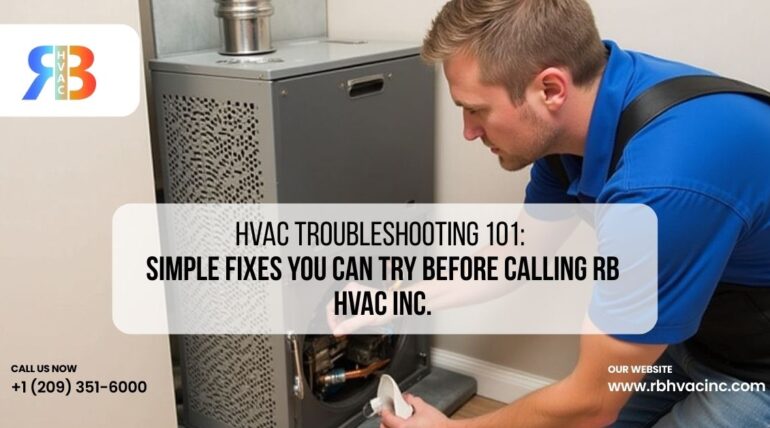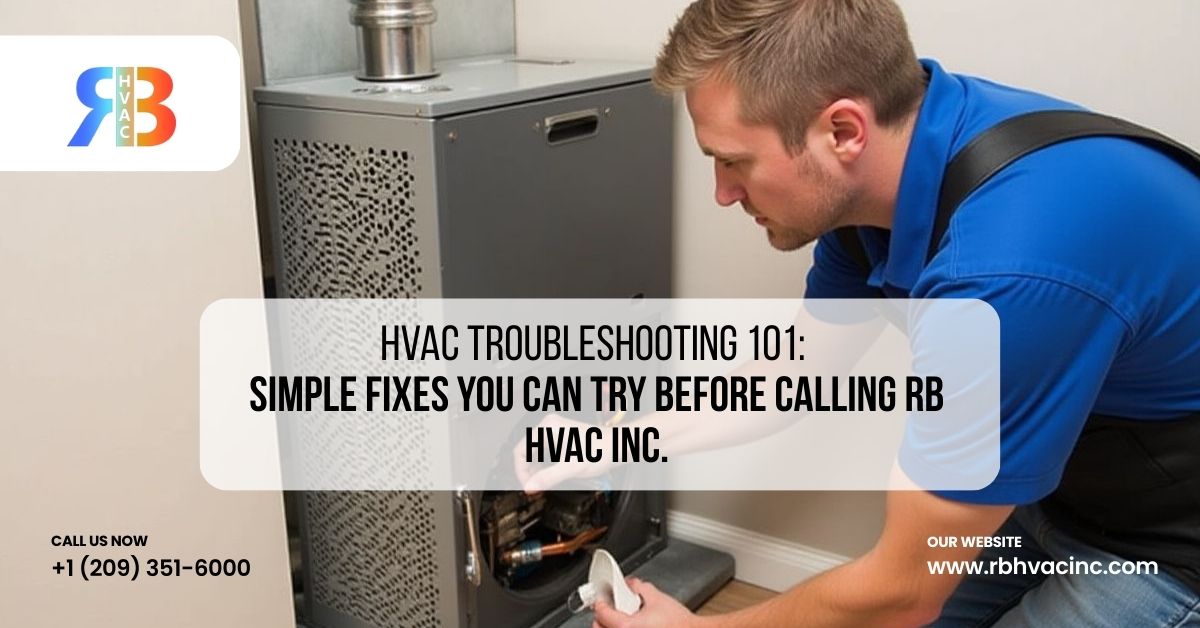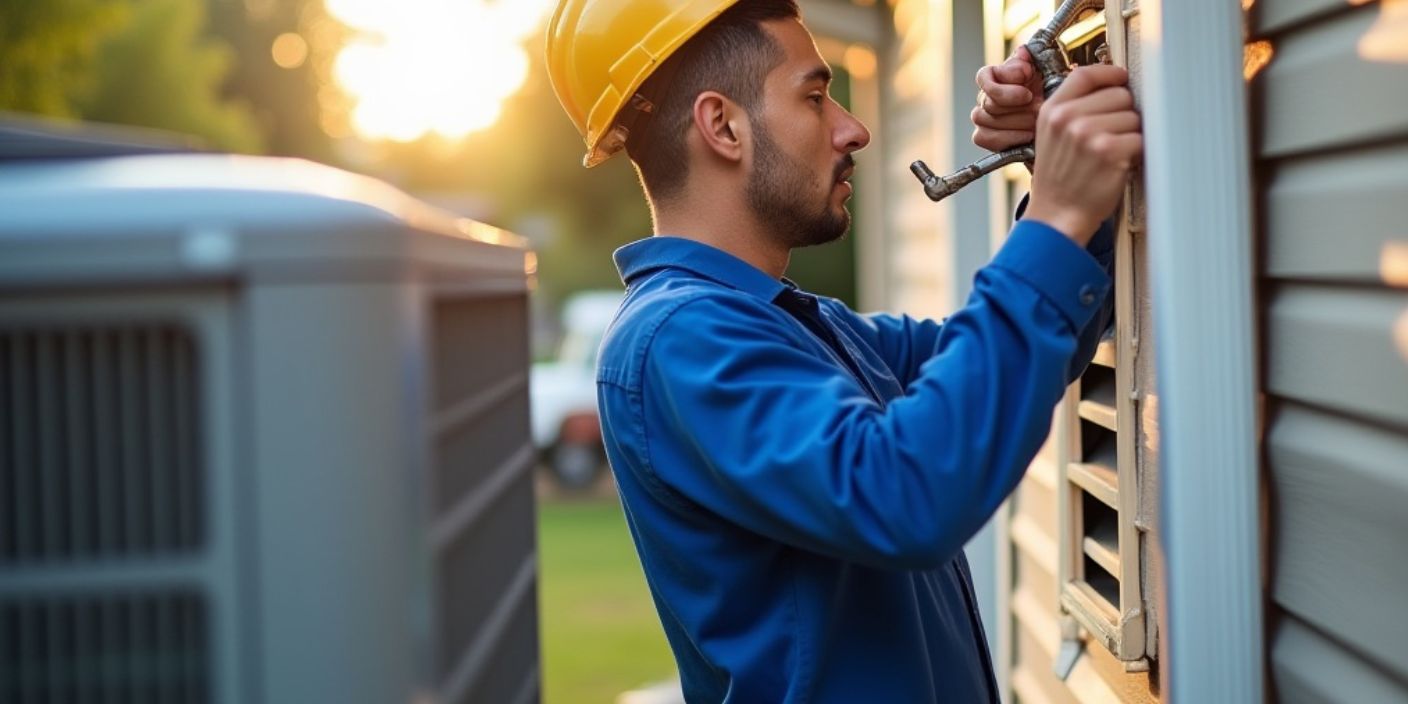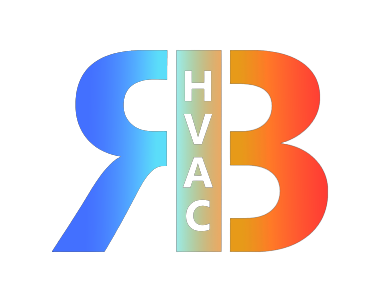
August 26, 2025
Cleaning
When your HVAC system stutters, makes weird sounds like a groan, and stops working altogether, you’re probably thinking about making a service call to fix it (and the bill). Before you call RB HVAC Inc. there are a number of really simple and effective things you can try yourself. Most issues with HVAC systems are due to minor issues that can be fixed without any knowledge from a HVAC technician. In this complete guide we will go through checking and correcting a series of issues that could save you time, money and frustration.
The Golden Rule of HVAC Troubleshooting: Start with the Basics
It’s easy to jump ahead and presume that something major has failed, however the most common culprits are usually the simplest. Always start off with the things to check that are simplest. With that methodology, you will not miss a simple issue while looking for the complex.
Step 1: The Thermostat Check – Your HVAC’s Command Centre
The thermostat is the brain of your HVAC system. A defective or incorrectly programmed thermostat can lead to various problems, from a system that doesn’t turn on to one that runs on and doesn’t turn off.
- Power Up: Is it turned on? If it is digital, verify that it has batteries. Dead batteries are a common cause of a non-working HVAC system.
- Settings Check: Is the thermostat on “cool” or “heat” as needed? Is the fan on “auto” or “on”? Setting the fan on “on” means the fan will run all the time, which can be confusing.
- Thermostat Setting: Is the temperature set to a level that will trigger the system? For example, if your home is 75°F and the thermostat is set to 78°F, the air conditioning unit will not turn on.
- Thermostat Reset: Many digital and smart thermostat models have a reset button or a way to factory reset. Check your thermostat’s instructions. This can sometimes clear simple software glitches.

Step 2: The Breaker Box – The Electrical Lifeline
Your HVAC unit uses a lot of electricity, and a circuit breaker that has been tripped is a common reason that your HVAC unit.
- Find the Breaker Box: Your house’s main electrical panel:
- Find the HVAC Breaker: The breakers are labeled, look for “HVAC”, “Furnace”, “AC”, or something similar.
- Check to see if the breaker has Tripped: A tripped breaker will be in the “off” position, and it may be in the middle. Turn it completely to the “off” position, and then turn it back to the “on” position.
- A Word of Caution: If the breaker immediately trips again after resetting it, there may be an electrical situation that is greater than you should attempt to address yourself. Call a professional, and do not keep resetting a breaker that continues to trip.
Step 3: The Air Filter – The Lungs of Your HVAC System
The number one problem for HVAC inefficiency or failures is a dirty air filter. The filter becomes clogged and the air flow is restricted, causing the HVAC system to work harder and creating a whole host of potential problems.
- Find the Filter: The filter is typically located in the return duct where the air is pulled into the system. This could be located in the furnace, in the air handler, or on the wall or ceiling next to the air handler.
- Look at the Filter: Pull the filter out and hold it up to the light. If you cannot see any light, then you will have to get a new filter.
- Replace it: Put a dirty filter in the trash and add a new one. Make sure you get the same size filter (the size is generally printed on the frame of the filter).
- What happens with a dirty filter: A seriously clogged filter can cause the evaporator coil (for air conditioners) to freeze up, or cause the heat exchanger (for furnaces) to become too hot.
If you think the evaporator coil might be frozen up, you should turn off the A/C (Air Conditioner), and allow it to thaw out for a few hours before restarting the system.

Step 4: The Outdoor Unit – The Heart of Your AC
If your air conditioner isn’t cooling, the problem could be with the outdoor unit, also known as the condenser.
- Inspect the Area: Ensure the unit is not surrounded by weeds, leaves, or other debris. A clearance of at least two feet on all sides is recommended for proper airflow.
- Clean the Fins: The metal fins on the outside of the unit can get clogged with dirt and debris. Use a garden hose with a gentle spray to wash them off. Be careful not to bend the fins. If they are bent, you can use a fin comb to straighten them.
- Check the Disconnect Switch: The outdoor unit has a small electrical disconnect box on or near it. Make sure the switch inside is in the “on” position.
Step 5: The Pilot Light (for Furnaces)
If you have a gas furnace, the pilot light is essential for ignition. Newer furnaces have electronic ignitions, but older models still use a standing pilot light.
- Check for a Flame: Follow the manufacturer’s instructions in your manual to locate the pilot light. If the flame is out, you may be able to re-light it.
- Re-lighting the Pilot: This is a simple process, but you must follow the instructions carefully to avoid any danger. The manual will have clear steps. If the pilot light won’t stay lit, there could be a problem with the thermocouple, a component that detects the flame.
When to Call RB HVAC Inc.
Although there are many things which can be resolved by following the basic troubleshooting steps. But sometimes it is important to call in a professional. You should consider calling RB HVAC Inc. if you encounter any of the following:
- Breaker Continues to Trip: This could mean that there is a serious electrical failure in the motors or the wiring.
- Strange Noises: if you hear a grinding or squealing noise, this could mean the fan or motors may be failing or the compressor is failing and needs to be serviced.
- No Airflow: if the fan is not running at all, the fan motor may have failed.
- Burning Smell: a burning smell could indicate an electrical issue or a critical component failure.
- System is leaking: leaks in an HVAC system, especially refrigerant leaks, are a critical issue and should be dealt with by certified technicians only.
- The system is old: If your system is over 15 or 20 years old and has been problematic, it may be more cost effective to replace the unit than to keep repairing it. Once again, R&B HVAC Inc can send a qualified technician to provide a recommendation or assessment.
Conclusion
A lot of common HVAC problems can be resolved on your terms using a step-by-step, proactive, determine your needs approach to troubleshooting. Many simple things you can troubleshoot such as replacing a filter, resetting a breaker, or checking your thermostat, can save you a service call, and get your unit working again as needed. If the problem seems complex, just call me. If it is beyond your fix, RB HVAC Inc. is only a phone call away, if you want reliable and professional service, I am sure I can help you keep your home comfortable and safe!
